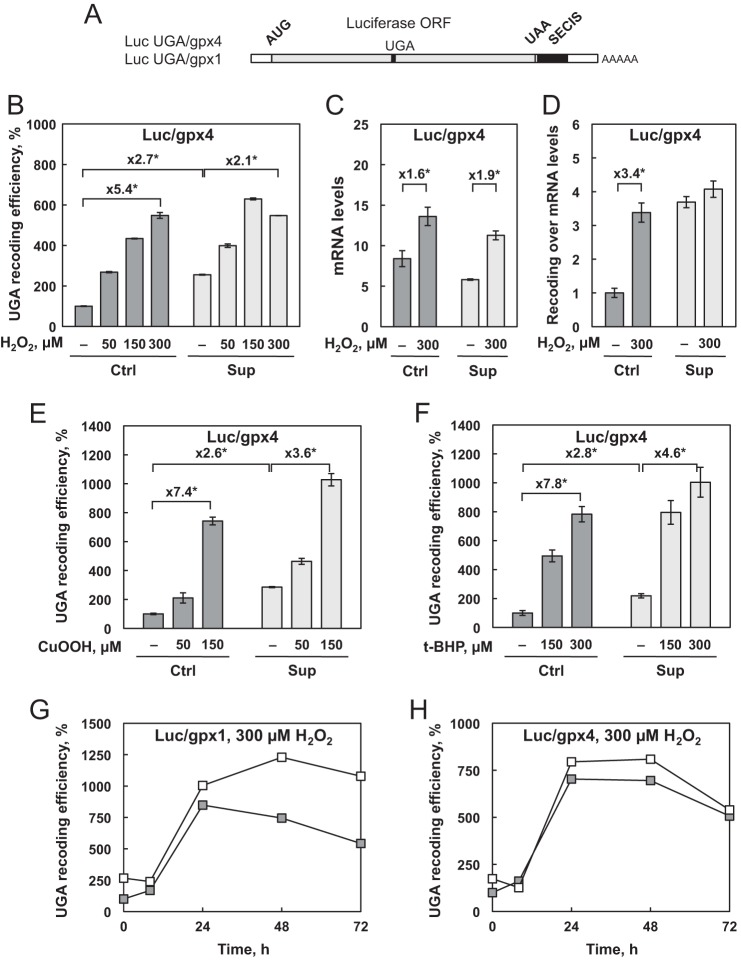FIGURE 5.
The efficiency of recoding UGA as selenocysteine is influenced by selenium concentration and H2O2-induced oxidative stress. A, representation of the luciferase reporter assay used for the analysis. The open reading frame of the firefly luciferase with a UGA/Sec codon at position 258 is linked to either the gpx1 or gpx4 SECIS element. HEK293 cells that stably express the Luc UGA/gpx4 reporter construct were grown and treated for 30 min with increasing concentrations of H2O2 (B), cumene hydroperoxide (E), and ter-butyl hydroperoxide (F). Luciferase activities were normalized to the protein concentration of the extract. UGA recoding efficiencies are calculated as the percentage of the normalized luciferase activity obtained in the untreated Ctrl extract. C, relative luciferase mRNA levels as a function of selenium concentration and H2O2 treatment in Luc UGA/Gpx4-expressing cells normalized to the mRNA levels of Hrpt. D, ratio of UGA recoding efficiency obtained in B over the mRNA levels obtained in C. The results were expressed relative to untreated Ctrl conditions. The cell lines expressing the Luc UGA/gpx1 (G) and Luc UGA/gpx4 (H) reporter constructs were treated with 300 μm of H2O2, harvested at time 0 and 8, 24, 48, and 72 h post-treatment, and analyzed as described above. Cells were either grown in Ctrl (gray squares) or Sup (white squares) conditions. UGA recoding efficiencies are calculated as the percentage of the normalized luciferase activity obtained in the untreated Ctrl extract at time 0. Data represent the mean ± S.D. of three independent experiments.

